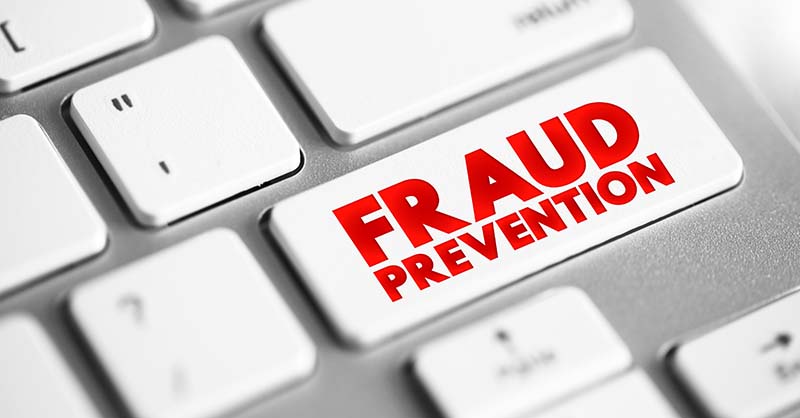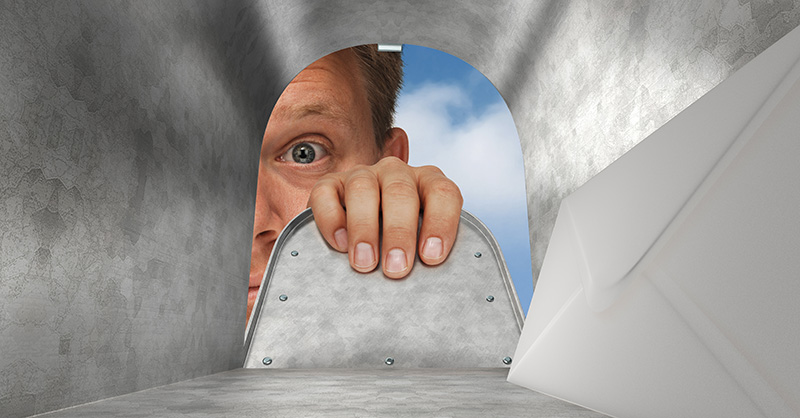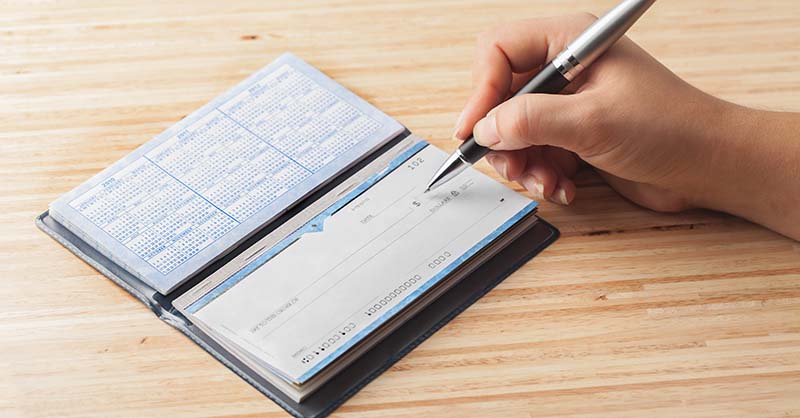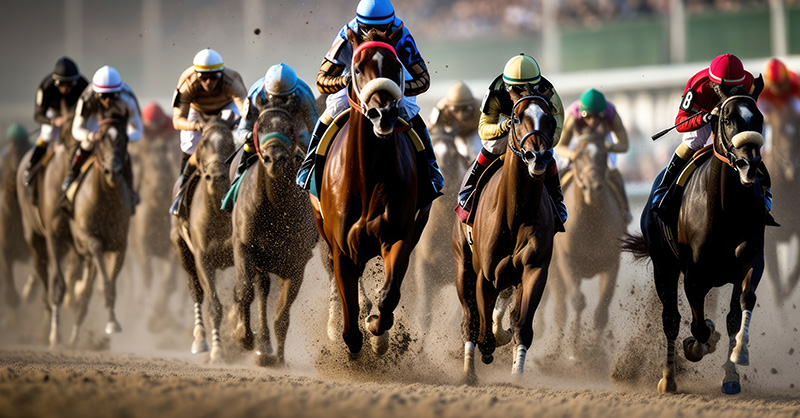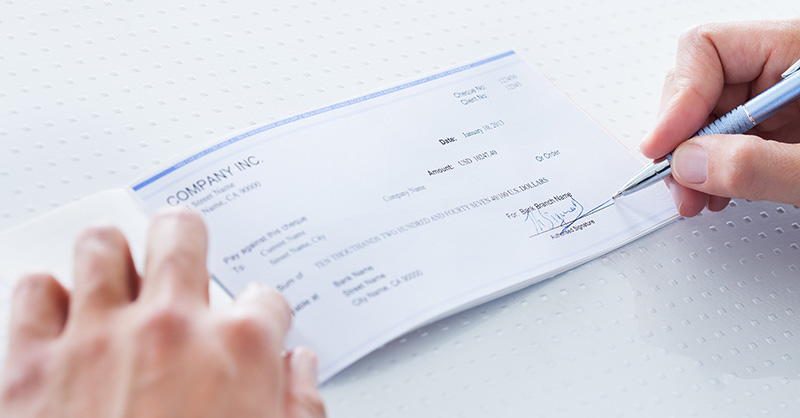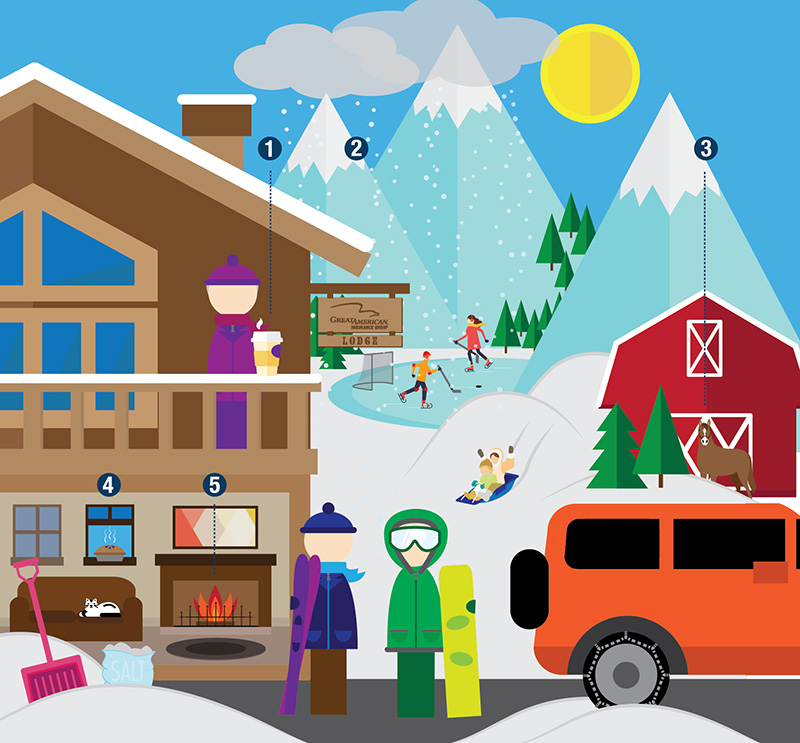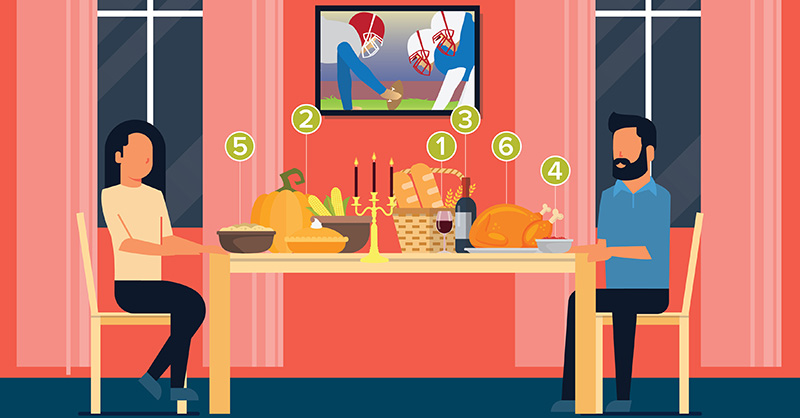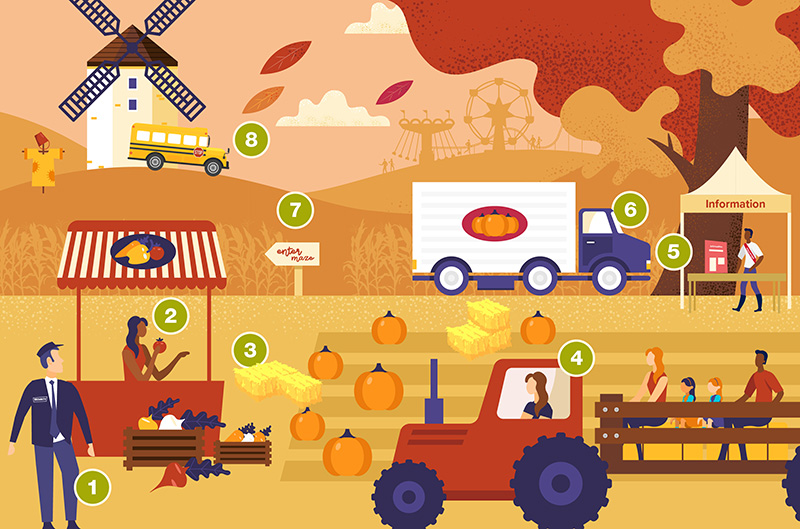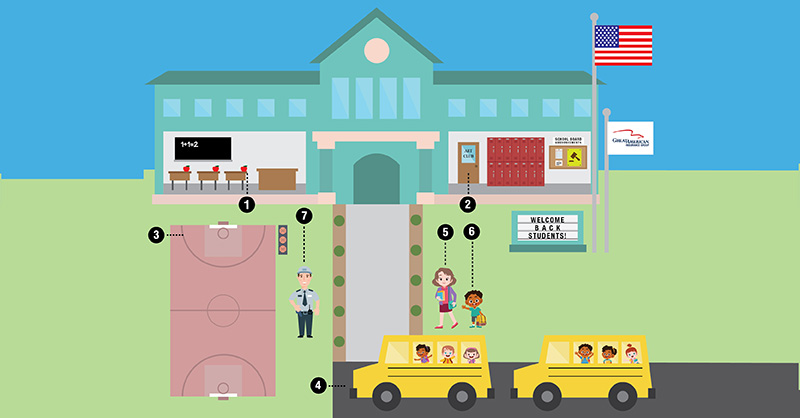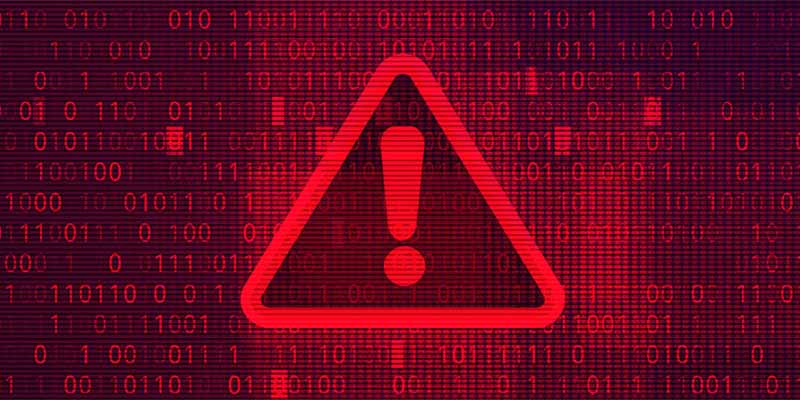Help Prevent Slip, Trip and Fall Injuries
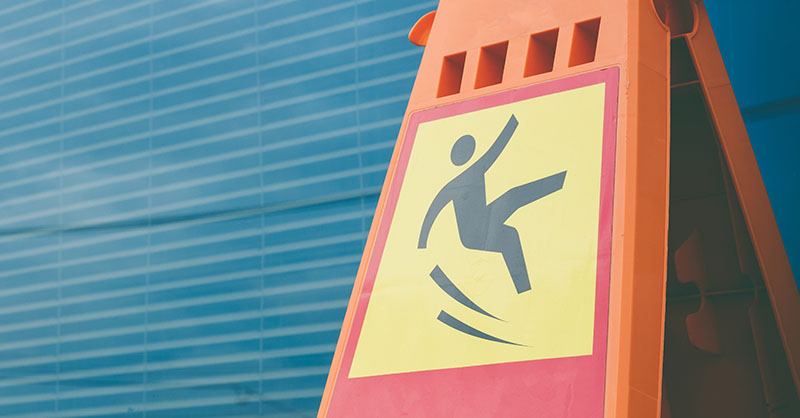
Your organization could have a legal responsibility to visitors on their premises. Visitors can include customers, vendors and members of the public and a higher degree of care should be paid when they are on your premises. This is because visitors are not as familiar with the specific layout of your premises. Most often, the duty is on the organization to protect visitors from common hazards.
Types of hazards include, but are not limited to the following:
- Trip hazards
- Wet floor surfaces
- Changes in elevation
- Changes in floor coverings
- Stairwells
- Parking lots
- Snow and ice
Every floor surface has a particular resistance to slipping, which is expressed in terms of a coefficient of friction (COF). The COF measures the friction and the amount of force that is required to move two surfaces away from each other. It is recommended that the COF should be greater than 0.6 by the Americans with Disabilities Act (ADA), with a minimum COF of 0.5 in all circumstances. An optimal level of COF is 1.0 or greater when able to be achieved.
Most often, the COF is determined by the use of a device known as a slip meter. However, the COF can also be calculated manually by using the frictional force divided by the normal force (in Newtons). This will then calculate the COF, which is represented by µ.
.jpg?sfvrsn=17d58b1_2)
According to the Bureau of Labor Statistics (BLS), slips, trips and falls (S/T/F) accounted for 20.7% of all fatal occupational injuries in 2019. The BLS reported a preliminary total of 5,333 fatal work injuries in the calendar year 2019. From 2018 to 2019 there was a 22.9% increase in S/T/F occurrences.
Below are some common factors contributing to slips, trips and falls.
| Contributing Factors That Could Lead to Slips, Trips and Falls | ||
| Visual observation/ability | Age | Weight |
| Physical state | Stress | Sickness |
| Medications, alcohol, drugs | Behaviors | Improper housekeeping |
| Insufficient signage | Not using designated walkways | Carrying heavy objects |
Prevention
Below are some ways that organizations can help protect both their customers and employees:
Slips
It can be difficult to see a liquid on the floor. This may be due to the type of floor surface or distraction when walking. Below are steps you can take to help prevent occurrences.
Housekeeping/Cleaning
- Adopt a spill management plan that ensures clean-up within a timely manner once the spill is found and that spills are not left unattended until a caution sign is placed. When warranted, you might need to monitor the spill until it is cleaned. You may also need to cordon off the affected area or place a safety barrier to restrict access.
- The plan should also address management’s commitment to reducing the risks of S/T/F, along with identifying the parties responsible for the implementation of the plan.
- Conduct periodic walk-throughs of the premises to identify areas that need to be addressed. Each walk-through survey should be documented to keep track of hazards in the event of an incident.
- Regularly inspect floor mats and runners to ensure they are of appropriate size. Also look for aged, worn and/or improperly placed mats as these could create a trip/fall hazard. Any mat that cannot lay flat on the floor without any curls, ridges or puckering should be removed as soon as possible and replaced. All mats and runners should be a color that contrasts against the flooring on which it is used.
- Ensure proper floor mats are being used in specific areas of the premises. For instance, the use of floor mats at every entrance can allow rain, snow and other contaminants to be cleaned off shoes before stepping onto a walking surface.
- When floor mats become soiled, they should be cleaned or replaced. Mats should be inspected daily following rain or snowstorms.
- When appropriate, require all personnel on the premises to wear non-slip footwear.
People
- Educate personnel on S/T/F hazards. Notify them of the support and assistance provided to help prevent, identify and report hazards.
- Employ cell phone use policies to reduce distracted walking.
Environment
- Make sure pedestrians can see where they are walking. Carrying large objects can impede this.
- Floors that are too shiny may make it more difficult to see hazards. Consider different flooring depending on your organization’s needs.
Trips
Tripping hazards are often preventable. It is the organization’s job to reduce the likelihood of tripping by evaluating themselves and the controls they have in place. Organizations should ask themselves these questions:
Walkways
- What walkways are being used?
- What are the walkways made of?
- Are the walkways handicap accessible?
- Are walkways at least 3 feet wider than the largest piece of equipment used or at least 4 feet wide?
- Are corridors where flammable or explosive materials are stored at least 3 feet wide. Is there an emergency exit at least 28 inches wide?
- Are yellow or high-contrast floor markings used for marking walkway hazards?
Housekeeping
- Are the walkways kept clean?
- Are there any wires or obstructions in the way that could cause a fall?
- How often is the floor cleaned?
- Who is responsible for safety checks?
- Is a housekeeping plan in place? Is it enforced and strictly followed?
Design
- Is the area well lit?
- Are there railings for stairs or slopes?
- Are railings OSHA compliant? (See OSHA 1910.29, Figure D-11)
- Are stairways in compliance with OSHA tread and rise requirements? (See OSHA 1910.25)
Stairway Rise and Tread Dimensions (OSHA 1910.25)
Angle to horizontal | Rise (in inches) | Tread run (in inches) |
30 deg. 35’ | 6 ½ | 11 |
32 deg. 08’ | 6 ¾ | 10 ¾ |
33 deg. 41’ | 7 | 10 ½ |
35 deg. 16’ | 7 ¼ | 10 ¼ |
36 deg. 52’ | 7 ½ | 10 |
38 deg. 29’ | 7 ¾ | 9 ¾ |
40 deg. 08’ | 8 | 9 ½ |
41 deg. 44’ | 8 ¼ | 9 ¼ |
43 deg. 22’ | 8 ½ | 9 |
45 deg. 00’ | 8 ¾ | 8 ¾ |
46 deg. 38’ | 9 | 8 ½ |
48 deg. 16’ | 9 ¼ | 8 ¼ |
49 deg. 54’ | 9 ½ | 8 |
Sidewalks and Parking Areas
Parking lots and sidewalks that are outside of buildings are often unattended by employees and pose a substantial risk of injuries to customers and employees. If adequate measures are taken, the risk of injuries can be drastically reduced:
- Design sidewalks and parking areas so that they are slip-resistant when wet. Do not paint areas that will negatively affect the walking surface.
- Ensure sidewalks are free of obstructions and additional defects.
- Paint sidewalks when walking levels change. Curbs and levels should be painted with slip-resistant high-contrast paint.
- Provide appropriate signage that can be easily seen.
- Wheel stops should be installed in all areas where the walking path is less than 3 feet wide.
- Speed bumps in parking areas should be painted in high-contrast slip-resistant paint.
- Ensure lighting is adequate and that there are no blind spots. Inspect daily to make sure lights are in working order.
- Inspect parking areas and sidewalks to make sure that water from downspouts is not being discharged in walking areas.
- Be sure to know who is responsible for cleaning sidewalks and parking areas. Provide a daily checklist for inspecting walking areas.
- Ensure visitors only use designated walkways, both inside buildings and on external sidewalks, steps and parking lots. You may need to install barriers to ensure this.
Snow and Ice
Winter poses a unique risk with snow and ice. Once snow and ice accumulate, the potential for a slip or fall drastically increases. According to the BLS, in 2017, there were over 20,000 snow-related injuries. While most cases do not result in death, common injuries include concussions, broken bones and bruises. Snow and ice must be removed promptly, and preparation procedures should be implemented:
- Decide if snow or ice removal should be carried out internally or contracted by a third party.
- Develop and maintain a written plan for snow and ice removal. The plan should include information regarding the following:
- When to execute the plan
- Call-in schedules
- Contractor selection
- Communications
- Identifying potential hazards
- Creating and maintaining snow removal logs
- The frequency of removal
- The use of salt or ice dissolving agent(s)
- Signage
- Proper claim handling practices and procedures
- Require all employees to report unsafe conditions as soon as they are spotted. Action should be taken appropriately.
If a contractor is hired, the following factors should be considered:
- Their ability to react quickly in the event of a storm
- Their experience and expertise
- Their reputation and quality of service
- Certificates of Insurance should be retrieved from the contractor. They should be verified with your organization and reviewed by an attorney if needed.
If snow removal is done by an employee, the following factors should be considered:
- How many employees will you need to assign to this task? This depends on the size and number of walking surfaces that need to be cleaned.
- How are these employees notified and mobilized during business hours or off-peak hours?
- What equipment is required for snow and ice removal?
- How are employees going to be trained? Are adequate safety procedures in place?
Be sure to keep a log of when the show or ice removal was done, the method of removal and who was present or managing the removal.
Visitor Controls
Security is an asset within an organization that can be used to assist with S/T/F prevention. This also can improve an organization’s abilities to protect itself from false claims and fraud that may exist.
Visitor controls are vital in protecting those who are least familiar with your organization’s risks and hazards. Due to their unfamiliarity, visitors should be treated with the highest levels of care. This can include securing areas inaccessible to visitors, credentialed security and CCTV. Visitors should always be monitored while on site. If needed, a representative should escort the visitors through the premises. Organizations that require significant levels of security should consider organizing a head of security who can address concerns specific to the organization.
One out of every five falls results in a broken bone. Every year, more than 800,000 patients are admitted to hospitals because of a fall injury. With this many injuries happening every year, it is extremely likely that your organization will experience a fall. By managing and controlling your slip and trip hazards, organizations can reduce the frequency and severity of the falls that happen.
Complete the following checklists to help assess your organization’s interior and exterior S/T/F hazards:
Contact Great American Loss Control for slip resistance measuring that can benefit your organization.
For additional Loss Control guidance, please visit the Plan & Protect safety hub.
Resources
Americans with Disabilities Act | A.4.5.1
Centers for Disease Control and Prevention | Important Facts about Falls
Health and Safety Executive | Slips and Trips


